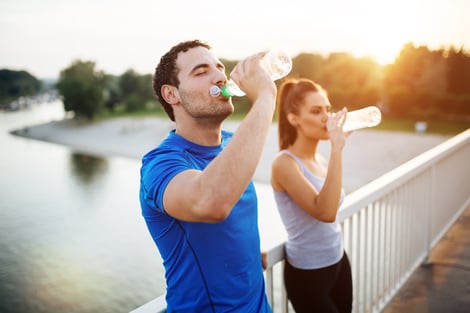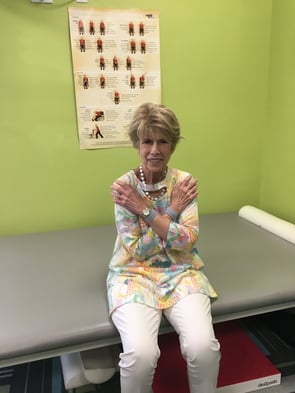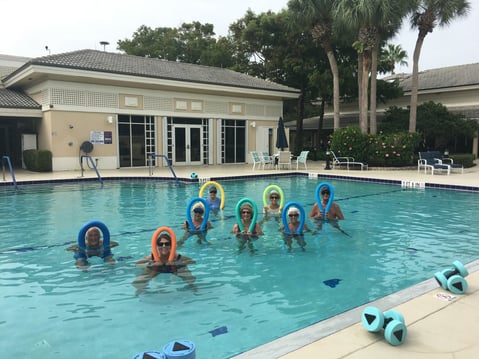 With the warmer summer months, it's the most prominent time when dehydration can become a big health issue and roadblock, especially if you are exercising outdoors. The heat and humidity can make it difficult to maintain a healthy balance of fluids in the body. That's why staying hydrated is not only important for your health but also for your fitness goals.
With the warmer summer months, it's the most prominent time when dehydration can become a big health issue and roadblock, especially if you are exercising outdoors. The heat and humidity can make it difficult to maintain a healthy balance of fluids in the body. That's why staying hydrated is not only important for your health but also for your fitness goals.
The Importance of Staying Hydrated
Water is essential for the proper functioning of our bodies. It regulates body temperature, helps transport nutrients, and removes waste. When we don't drink enough water, our bodies can become dehydrated, which can lead to serious health problems. Mild dehydration can cause headaches, fatigue, and dry skin, while severe dehydration can lead to heatstroke, seizures, and even death.
During the summer months, we are more likely to become dehydrated because we lose more water through sweating, and we may not be aware of how much water we are losing. Additionally, the heat can cause us to lose our appetite, which can make it harder to stay hydrated.
Exercising in the Heat and Hydration
Exercising in the heat can also have a significant impact on hydration levels. When we exercise, our bodies generate heat, and we sweat to cool down. This process can cause us to lose a lot of water, which can lead to dehydration if we don't replenish the lost fluids.
When we exercise in the heat, the risk of dehydration is even greater. This is because we lose more water through sweating, and the hot air can make it harder for our bodies to cool down. Additionally, if we are not used to exercising in the heat, our bodies may not be able to adjust to the higher temperatures, which can make us more susceptible to dehydration.
Staying Hydrated Through Water and Electrolytes
Drinking enough water is the most important thing you can do to stay hydrated. It's important to drink water before, during, and after exercise, especially if you're exercising in the heat. Aim to drink at least eight cups of water a day, and more if you're exercising or spending time outside.
Electrolyte replacement drinks like Gatorade, Powerade, Body Armor, or PRIME can also help you stay hydrated. When we sweat, we not only lose water, but also lose electrolytes like sodium, potassium, and magnesium. These electrolytes are essential for proper muscle and nerve function, and if we don't replace them, we can become dehydrated. You can use electrolyte replacement drinks to replenish these electrolytes.
5 Strategies to Stay Hydrated
Here are five strategies to stay hydrated during the summer months:
- Drink water before, during, and after exercise. You should aim to drink at least eight cups of water a day, and more if you're exercising or spending time outside.
- Use electrolyte replacement drinks. These drinks can help replenish electrolytes lost through sweating.
- Plan your exercise routine. Try to exercise early in the morning or later in the evening when temperatures are cooler. If you must exercise during the hottest part of the day, take frequent breaks and drink plenty of water.
- Wear appropriate clothing. Choose lightweight, breathable fabrics that allow sweat to evaporate, which can help you cool down more. Additionally, wearing a hat or visor can help protect your head from the sun, which can also help regulate your body temperature.
- Eat hydrating foods. Besides drinking water, you can also eat foods that are high in water content, such as watermelon, and cucumbers.
Staying hydrated is essential for maintaining good health and achieving your fitness goals, especially during the summer months. Drinking enough water, replenishing electrolytes, and planning your exercise routine can help you stay hydrated. And don't forget to wear appropriate clothing and eat hydrating foods! Remember, staying hydrated doesn't have to be a chore. It can be fun and easy to do. So, drink up, and enjoy the summer sun!

.jpg?width=472&height=314&name=GettyImages-910975942%20(1).jpg) Enthusiasm is very important in the fitness world. As fitness leaders in the community, it is our job and our responsibility to set the tone for our residents and clients. Imagine coming in for a fitness class or a personal training session and your trainer is not energetic at all. It almost seems like they don’t even want to be there. How can you expect to be excited about your workout if your trainer isn’t? Energy, whether it is good or bad, is contagious. Our job as fitness professionals is to get people excited to workout. The best way we can do this is by increasing our own enthusiasm. If we are excited about their workout, then they will be excited too.
Enthusiasm is very important in the fitness world. As fitness leaders in the community, it is our job and our responsibility to set the tone for our residents and clients. Imagine coming in for a fitness class or a personal training session and your trainer is not energetic at all. It almost seems like they don’t even want to be there. How can you expect to be excited about your workout if your trainer isn’t? Energy, whether it is good or bad, is contagious. Our job as fitness professionals is to get people excited to workout. The best way we can do this is by increasing our own enthusiasm. If we are excited about their workout, then they will be excited too.
 It is not uncommon that group fitness classes tend to be the bread and butter of a community’s fitness program. Classes provide so many benefits including guided exercises,
It is not uncommon that group fitness classes tend to be the bread and butter of a community’s fitness program. Classes provide so many benefits including guided exercises, 
 When you were a kid, going out to play was something you likely did every day. No matter if it was riding a bike, skipping rocks at the pond, or running around the neighborhood with friends, it was just fun! Moving came naturally and easy and was not considered “exercise” to the adolescent mind even though it was most certainly keeping your body healthy. The reason I bring this up is because I want you to think about those times. They were a lot of fun, weren’t they? Sometimes in our fitness center, we will hear a member say that exercise isn’t very fun. We get it! Exercise isn’t everyone’s cup of tea, but as a fitness professional, my goal is to find a way to make it fun for you. Another thing we will often here is “I’m not as young as I was!” or “I can’t do that type of movement anymore.” It is true, with the play you did as a child, there was probably a lot of falling, bumps, and bruises and that can make a person apprehensive to get started in “play” again. But that is why we are here, to explore with you and find a form of fitness that you enjoy. Yes, the several number of changes that tend to happen to the body as it goes through the stages of life can make some things more difficult, but we want to help keep it from being the reason you decide to play less.
When you were a kid, going out to play was something you likely did every day. No matter if it was riding a bike, skipping rocks at the pond, or running around the neighborhood with friends, it was just fun! Moving came naturally and easy and was not considered “exercise” to the adolescent mind even though it was most certainly keeping your body healthy. The reason I bring this up is because I want you to think about those times. They were a lot of fun, weren’t they? Sometimes in our fitness center, we will hear a member say that exercise isn’t very fun. We get it! Exercise isn’t everyone’s cup of tea, but as a fitness professional, my goal is to find a way to make it fun for you. Another thing we will often here is “I’m not as young as I was!” or “I can’t do that type of movement anymore.” It is true, with the play you did as a child, there was probably a lot of falling, bumps, and bruises and that can make a person apprehensive to get started in “play” again. But that is why we are here, to explore with you and find a form of fitness that you enjoy. Yes, the several number of changes that tend to happen to the body as it goes through the stages of life can make some things more difficult, but we want to help keep it from being the reason you decide to play less.